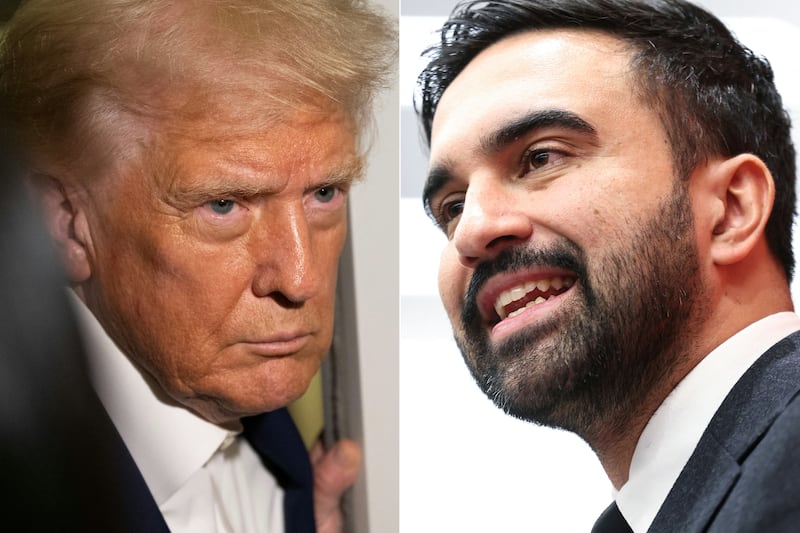In his newspaper column, on the morning of the 2014 Munster semi-final, Joe Brolly pored over Kieran Donaghy’s intercounty career, reading the vital signs, shaking his head, gravely. Donaghy had been a “two-year wonder”; he had gone “soft”; he was “distracted”; he was no longer fit to be called Star, his childhood nickname. No cure. Not much time. Especially not time.
Donaghy kept the article for fuel. In his mind, his mortality as an intercounty footballer was mixed up with a common diagnosis: he was older. In March of that year he had turned 31, and in the GAA hitting your early 30s has always been a triggering event. People start to wonder. They’re not afraid to ask. How much longer? Can’t be much longer.
“I used to always laugh at that,” says Donaghy now. “People would have been saying, ‘You’re going to be in your prime at 28, 29.’ Then at 30 or 31 you have a bad game and people are saying, ‘He’s a bit older now. He’s gone.’ You’re kind of going, ‘Lads, I’m a year or two out of my prime, which was supposed to be when I was at my rocket best’.
“There was definitely a bit of a piseog with that. I did rally-cry against that when I was playing. It was annoying to me that I would have been written off when I was 31, when I had a year-long injury [osteitis pubis] and I was kind of easy fodder for people to say, ‘Look, he’s gone now. He’s had his day.’ And I was going, ‘Lads, I’m fine. I just had a bad injury. When I get cleared up I’m still going to be able to play the way I was.’”
RM Block
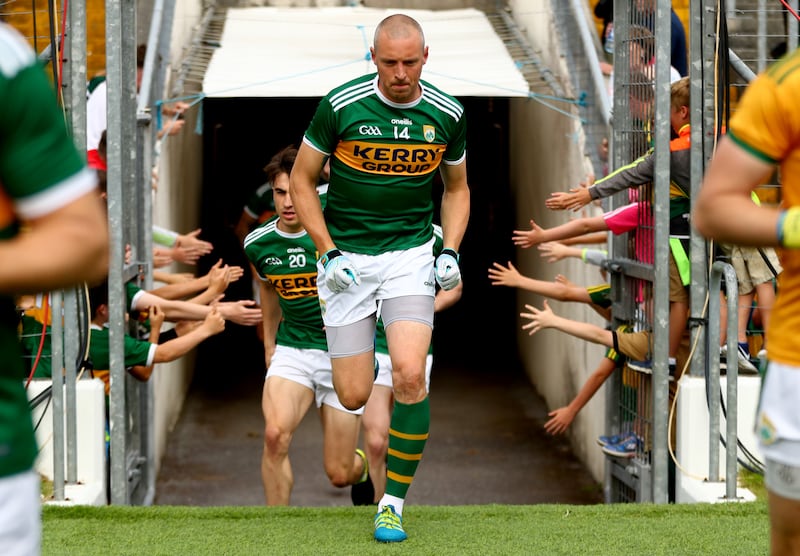
Before he came back for his final season, four years later, Donaghy butted the question of his age once more. “I still feel like I can do a job for Kerry and I still enjoy it, so why would I retire?” he said. “Because society thinks I should retire? Because when you get over 30 in the GAA, they all think you should retire?”
It is interesting how the narrative has changed. Over the last 20 years, as the training of intercounty teams escalated in volume and intensity, the early consensus was that intercounty careers would be shorter. Players’ bodies would break down, or their appetite would give up. The reality turned out to be something different.
The Dublin team that won the All-Ireland last year had an average age of 30, one of the oldest to ever win the title. Strip out their 41-year-old goalkeeper, and the average only drops to 29. Of the starters, eight of them were 30 or over; two of the others hit that number before the end of the year. Did it matter? Did anyone notice?
The last Kerry team to win an All-Ireland under Mick O’Dwyer, in 1986, had an average age of 29. Only five of them ever played another championship match outside of Munster. Dublin’s Team of Ancients are joint favourites for the All-Ireland.
What changed? Habits. Good practice merged into normal practice. Players became more inclined to behave like elite athletes, with all the adding and subtracting that involved in their day-to-day lives. Once GAA teams embraced sports science, nobody was guessing any longer. Players were tested and measured, regularly. They were instructed and expected to pay attention. Everything that mattered in a player’s physiology was quantifiable and traceable. All of it added up to time saved.
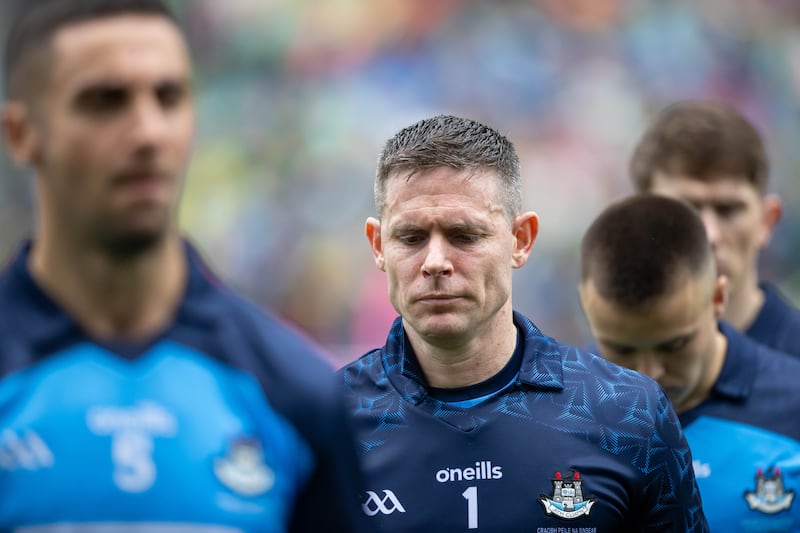
For me, there was a constant thirst for knowledge and seeing where I could push the boundaries in terms of training and just my body in general
— Ryan McCluskey
When Ryan McCluskey retired in 2018, he had given 18 seasons to the Fermanagh footballers. His career started before sports science really gripped the preparation of GAA teams, and before a generation came along that was educated in self-preservation. He managed that process himself.
“I was probably fortunate that I was studying sport science,” McCluskey says. “For me, there was a constant thirst for knowledge and seeing where I could push the boundaries in terms of training and just my body in general. With the modern player, there is a massive emphasis on wellbeing now. It’s a really holistic approach – health, diet, psychologists, everything. I knew if I looked after my wellbeing I could keep going.”
Professor Niall Moyna, from DCU’s School of Health and Human Performance, has been involved with teams since the late 1970s and is part of Ger Brennan’s backroom team in Louth this year. He started with the Limerick senior footballers while he was a student, and soon fell in with the terrific Monaghan team of the 1980s that climbed from Division Four and won Ulster titles.
“In those days, a guy could come back into training two or three stone overweight,” says Moyna. “Nudie Hughes and Gerry McCarville and them boys – holy Moses. I could tell you some rare stories about me running them around Monaghan town and up hills. The big difference is, I was getting guys who started the year 50 per cent away from peak fitness. It was just a repetitive cycle. Today, when intercounty players come back in, they’re only 15 per cent away.
“I’m not sure that players are that much fitter. I tested the International Rules team that went to Australia, probably 15 or 20 years ago, and I recently took the Louth team in to do the same tests, and there’s no difference in their actual aerobic capacity. But their body type and the strength [of modern intercounty players] have gone through the roof. With the conditioning now, and diet, there is absolutely no reason why players can’t perform at maximum effort in their mid-30s.”
The Monaghan team of the last decade – resident in Division One of the league, regular summer visitors to Croke Park – have depended on extraordinary longevity from load-bearing players, to one degree or another. Dick Clerkin played for 17 seasons, Vinny Corey 16, Drew Wylie 13. Karl O’Connell is back for another campaign at 35. Darren Hughes turned 37 last week and marked it with his first appearance of the year. Conor McManus turned 36 in November and has committed to his 18th season. O’Connell and McManus were both All-Star nominees last year.
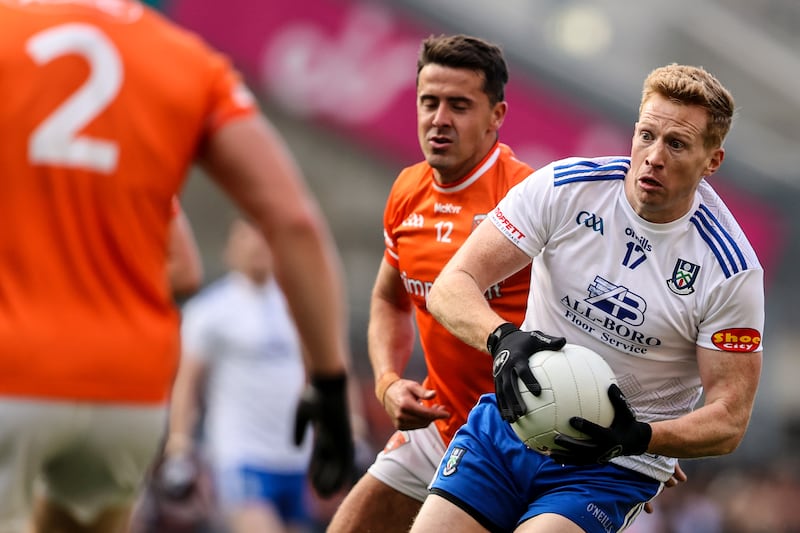
Kieran Hughes finally retired in January, but only after 15 years of unblinking service. He played his last minor match on New Year’s Day 2009 and trained with the Monaghan seniors a day later.
“Could Monaghan have stayed at the top table if the older players weren’t prepared to keep going? I’m able to admit that now. If you had asked me last year or the year before, I would have said: ‘No, no.’ You don’t really appreciate these things until you’re out of the dressingroom.”
Longevity, though, is not without risks. Hughes has been battling tendon pain in his hamstrings for the last 10 years. On Thursday he had an appointment with a specialist in the UK, exploring the possibility of surgery. He lives with discomfort. Managing that through the final years of his Monaghan career was the price he paid for carrying on.
I found myself static. Getting paid and paying the mortgage, but getting no real job satisfaction out of it
“You know yourself, in life, everybody has pains. I just unfortunately have this and it bugs me now. It was messing with upstairs. I was getting up out of bed in the morning and I didn’t know how the leg was going to be. I was fighting with everybody. It was only in the last couple of weeks I figured out, ‘Right, where was my ‘why’ for the last 15 years?’ I wanted to get as much out of it as possible. I definitely squeezed every last ounce.”
For managers, older players are a different challenge. There must be empathy and forbearance. In your 30s, life is liable to change in ways that you wouldn’t have entertained in your 20s. In Donaghy’s case he got married, became a dad, changed jobs and was still playing basketball. Eamon Fitzmaurice was the Kerry manager and he still wanted him. Once they could agree on the common goal everything was possible.
[ Pat Critchley’s compelling story is one to stop you in your tracksOpens in new window ]
“With my dyslexia, I couldn’t pass my exams to move up in the bank,” says Donaghy, “and I found myself static. Getting paid and paying the mortgage, but getting no real job satisfaction out of it. I was carrying an injury and the 9-5 was making it harder to get treatment. All that was going on in my head and was affecting my weekly outlook.
“Then I just made the call one day to leave that job with the bank and get the job I have now with PST Sport. All of a sudden I had that bit of flexibility. I had a manager in Eamon who knew the effort I was putting in to represent my county, and he was extremely good with me. He was very good with the basketball. In my last year with Kerry, our second child was after coming along and you need the support of your wife. If you don’t have that it’s going to get stressful.”
In those days, a guy could come back into training two or three stone overweight
— Professor Niall Moyna, from DCU’s School of Health and Human Performance, on players in the 1980s
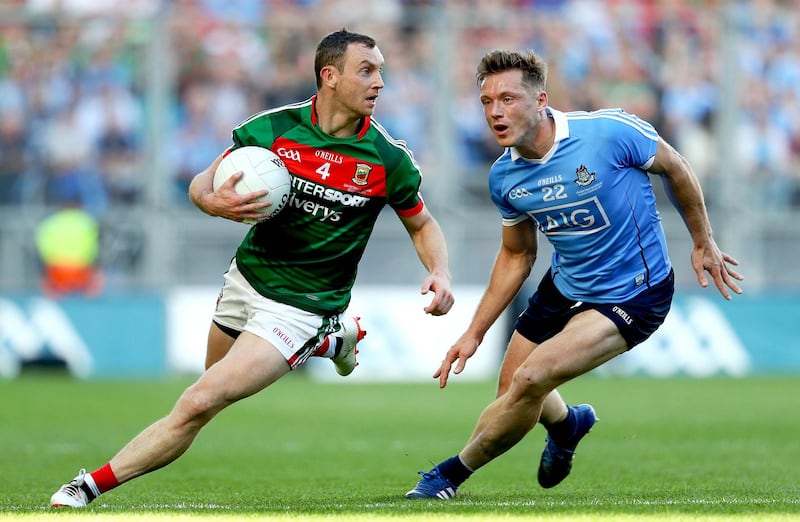
Donaghy retired at 35. Keith Higgins was the same age when he finished with the Mayo footballers, after 16 seasons; as soon as he walked out of that dressing-room, though, he gave two more seasons to the Mayo hurlers. His game was founded on speed and explosiveness. Did any of it leave him? Not so he noticed.
Aidan O’Shea has just embarked on his 16th season with the Mayo footballers. Two weeks ago in Tralee he shook his head in frustration when he was replaced. Last week he wasn’t in the match day squad, so he did a running session after the game with all the other unused players. Mayo still want him. Need him? Want will do.
“Nobody sees the work Aidan does in the off-season to keep himself in such good shape,” says Higgins. “I don’t know when Aidan missed games through injury. He’s been available for, I’d say, 99% of the games in his career. That comes down to the work he does off the pitch. He’s in as good a shape now as he was in 2012, 2013.”
The lap of honour was winding down after last year’s All-Ireland final when the three Dublin players who had just won their ninth medal posed for photographs at the Davin End: Stephen Cluxton, 41; Mick Fitzsimons, 35; James McCarthy, 33. Everyone assumed it was their last match. Now everyone assumes they will be back.
Finished? You tell them.
- See our new project Common Ground, Evolving Islands: Ireland & Britain
- Sign up for push alerts and have the best news, analysis and comment delivered directly to your phone
- Find The Irish Times on WhatsApp and stay up to date
- Our In The News podcast is now published daily – Find the latest episode here

















